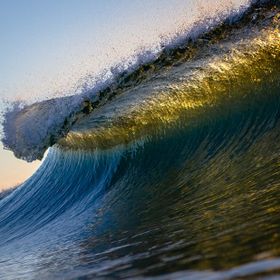

davidfieldphoto
FollowViews
251
Likes
Awards
Lucky 3 Award
Peer Award
Superb Composition
Absolute Masterpiece
Magnificent Capture
Outstanding Creativity
Genius
Top Choice
Top Ranks
Categories
Same photographer See allBehind The Lens
Discover more photos See all
Behind The Lens
Location
I took this photo on my favourite beach, just down the road from my home in Sydney's Northern Beaches. I was swimming about 50 metres (55 yards) out to sea with my camera and a pair of bodyboarding fins. This is my favourite way to shoot as I get to enjoy the excitement of being right inside fast, powerful, barreling waves. It's great exercise too!Time
This shot was taken at 6:47am in the morning. Early mornings are my favourite time to shoot as the light is best, there are very few people in the water and the wind is calm. I try to experiment with shooting from different angles as much as possible as the light and water are constantly changing. Right on sunrise the best colour and contrast will be up high in the lip of the wave as this is the thinnest part of the wave. Later on in the day you can get some really good results shooting down at the sea floor or swimming underwater and shooting up at the wave from below. On this particular shot I was lucky as backwash from the preceding wave hit the one in front of me, causing it to warp and flare. I was also lucky enough to capture the moon shining in the early morning sky.Lighting
Lighting is the biggest challenge with this type of photography. To get the best light I try to get in the water before sunrise and shoot just as the sun is coming. The difficulty is that I am trying to freeze fast moving water in very low light, so I am frequently pushing my camera to it's limit. I try to keep my shutter speed as high as possible (1/1000 or faster is best) while still trying to keep my ISO down and aperture between f/4-5.6.Equipment
For this shot I was using a Canon 7D with a Tokina 10-17mm f/3.5-4.5 fisheye lens. I was also using an Aquatech water housing to keep everything dry, a wetsuit to keep me warm and a pair of bodyboarding fins to help me get around in the water. This shot was taken at 10mm, 1/2000 sec, f/4.0, ISO 2000.Inspiration
I never get tired of watching the way light shines through breaking waves, it's mesmerising. So I try to capture this for other people to see and enjoy. The hard part for me is trying to create an image of these fleeting flashes of light while also somehow including an impression of the more intangible aspects of being out at sea, such as the speed and power of heavy moving water or the peacefulness of a sunrise out to sea.Editing
Due to the high dynamic range present when shooting so close to sunrise, these photos usually come out of the camera looking a bit flat. I increased the contrast using a curves adjustment and boosted the vibrance to recover some of the lost colour in the sky and the water. I also tweaked the white balance a little (these shots almost always come out the camera looking too warm) and increased the sharpness along the leading edge of the wave. Also, because it was shot at high shutter speed in low light (1/2000), the image was pretty noisy, so I removed as much of this as I could.In my camera bag
I use a Canon 7D for all my photos. In the water I use a Tokina 10-17mm f/3.5-4.5 fisheye or a Canon EF 50mm f/1.4 lens. The fisheye is great for shooting inside barreling waves or capturing wide angles such as the image above. On the other hand the 50mm is super sharp and means I can shoot a little further away. This is great for more dangerous reef breaks when I want to capture every little detail but can't afford to get too close. To keep all my gear dry while I'm at sea I use Aquatech water housings. They're incredibly tough and are waterproof to 10m. When on land my go-to walking around lens is a Canon EF-S 17-55mm f/2.8. It's a little on the heavy side but it's super versatile. It's also amazing for landscapes. I also use a Canon EF 100-400mm f/4.5-5.6L for it's incredible focal length and sharpness.Feedback
Try to get out first thing in the morning or last thing in the afternoon as this is when the colour is best. Low to no wind is good, but if you live in a place where this is rare, shooting thick, powerful waves that break in shallow water can help to negate this a bit. When processing, my main advice is to take the time to understand how to use curves and the white balance sliders, as they make a massive difference to the look and feel of an water image. Also, don't be afraid to blow out your highlights or over-darken your shadows if it suits the mood you’re trying to create.












































